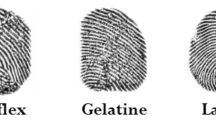Abstract
RF fingerprinting is an emerging technology in the field of IoT security and is widely used in many areas, such as management, wireless device authentication, and interference source determination (Hall et al. in IEEE Trans Dependable Secure Comput 201–206, 2004 [1]; Wu et al. in Sci China Inf Sci 65(7):170304, 2022 [2]; Lin et al. in Sci China Inf Sci 2023 [3]). Most of these application scenarios rely on recognition methods for devices. Most of the mainstream recognition methods are based on a large amount of data for training. In case of insufficient sample size, the mainstream recognition methods are not applicable. Generative adversarial networks (GANs), with their adversarial properties, are well-suited and effective for applications in scenarios where the amount of data is insufficient. In this paper, we propose an RF fingerprint data enhancement method based on Wasserstein Generative Adversarial Network (WGAN). The experimental results show that the method can effectively improve the accuracy of RF fingerprint recognition in the same and limited data set.
Access this chapter
Tax calculation will be finalised at checkout
Purchases are for personal use only
Similar content being viewed by others
References
Hall J, Barbeau M, Kranakis E (2004) Radio frequency fingerprinting for intrusion detection in wireless networks. IEEE Trans Dependable Secure Comput 201–206
Wu W, Hu S, Lin D, Wu G (2022) Reliable resource allocation with RF fingerprinting authentication in secure IoT networks. Sci China Inf Sci 65(7):170304
Lin D, Hu S, Wu W, Wu G (2023) Few-shot RF fingerprinting recognition for secure satellite remote sensing and image processing. Sci China Inf Sci. https://doi.org/10.1007/s11432-022-3672-7
Zou S, Liu J, Yang H (2013) Research of compensating zero-IF modulator IQ imbalance in digital domain. Video Eng 23:163–166. https://doi.org/10.16280/j.videoe.2013.23.030
He Z, Hou S, Zhang W, Zhang Y (2021) Multi-feature fusion classification method for communication specific emitter identification. J Commun 02:103–112
Shen G, Zhang J, Marshall AJ, Cavallaro J (2021) Towards scalable and channel-robust radio frequency fingerprint identification for LoRa. IEEE Trans Inf Forensics Secur 17:774–787
Cekic M, Gopalakrishnan S, Madhow U (2020) Robust wireless fingerprinting: generalizing across space and time. arXiv:2002.10791
Wang W, Gan L (2022) Radio frequency fingerprinting improved by statistical noise reduction. IEEE Trans Cogn Commun Netw 8:1444–1452
Wang T, Bian Y, Zhang Y, Hou X (2022) Using artificial intelligence methods to classify different seismic events. Seismol Res Lett
Shen G, Zhang J, Marshall AJ, Peng L, Wang X (2020) Radio frequency fingerprint identification for LoRa using spectrogram and CNN. In: IEEE INFOCOM 2021—IEEE conference on computer communications, pp 1–10
Goodfellow IJ, Pouget-Abadie J, Mirza M, Xu B, Warde-Farley D, Ozair S, Courville AC, Bengio Y (2014) Generative adversarial nets. NIPS
Arjovsky M, Bottou L (2017) Towards principled methods for training generative adversarial networks. arXiv:1701.04862
Arjovsky M, Chintala S, Bottou L (2017) Wasserstein generative adversarial networks. In: International conference on machine learning
Acknowledgements
Partially funded by Natural Science Foundation of Sichuan Province (2023NSFSC0479) and partially funded by Grant SCITLAB-20005 of Intelligent Terminal Key Laboratory of Sichuan Province.
Author information
Authors and Affiliations
Corresponding author
Editor information
Editors and Affiliations
Rights and permissions
Copyright information
© 2024 The Author(s), under exclusive license to Springer Nature Singapore Pte Ltd.
About this paper
Cite this paper
Li, B., Liu, D., Yang, J., Zhou, H., Lin, D. (2024). An RF Fingerprint Data Enhancement Method Based on WGAN. In: Wang, W., Liu, X., Na, Z., Zhang, B. (eds) Communications, Signal Processing, and Systems. CSPS 2023. Lecture Notes in Electrical Engineering, vol 1032. Springer, Singapore. https://doi.org/10.1007/978-981-99-7505-1_56
Download citation
DOI: https://doi.org/10.1007/978-981-99-7505-1_56
Published:
Publisher Name: Springer, Singapore
Print ISBN: 978-981-99-7539-6
Online ISBN: 978-981-99-7505-1
eBook Packages: EngineeringEngineering (R0)




